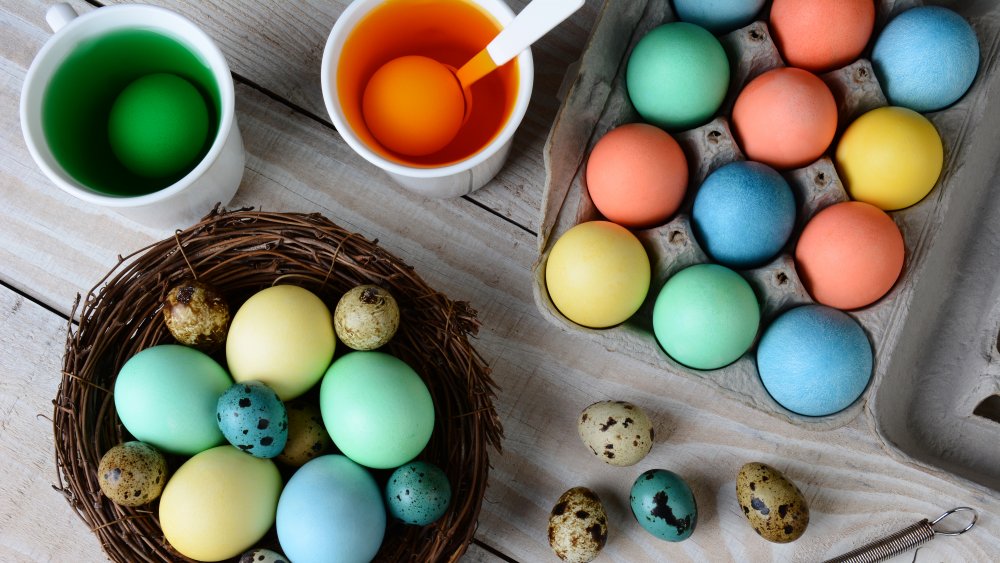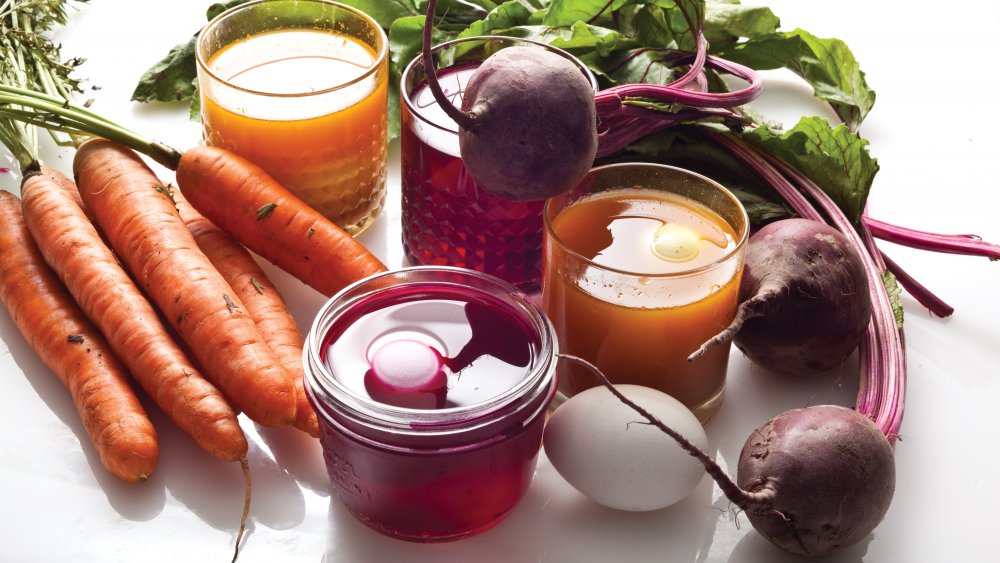Here's What You Can Do If You Don't Have Any Easter Egg Dye
From Easter Bunny baskets to backyard hunts, brightly colored eggs have become an unmistakable symbol of the spring season — and a tradition that has surprisingly deep roots in Western civilization (via Time). Accordingly, old-fashioned kits to color eggs at home have gone way beyond a few basic shades of packaged dye; as Good Housekeeping notes, you can now transform eggs into everything from glitter bombs and galaxies to funny faces (complete with hair).
But whether you can't get to the store, are sticking to a budget, or want to try more eco-friendly options this Easter, fear not — you don't need a kit to dye eggs. Instead, tap into alternatives you already have on hand at home.
One easy replacement for traditional kits is, of course, food coloring. My Frugal Home recommends adding one to two drops of white vinegar or lemon juice, plus 10 to 20 drops of food coloring, to boiling water, then soaking hard-boiled white or brown eggs in the solution for five minutes to achieve vivid hues. (If you don't have any vinegar or lemon juice, you can still achieve some degree of color; the eggs will simply emerge as pastels vs. rainbow-brights.)
Dyeing eggs with natural alternatives and household items
If you want to avoid chemically based food dyes altogether, the natural world offers up a slew of options to dye eggs. Martha Stewart explains that when boiling eggs with a natural dye source, the heat allows the color to penetrate shells, while soaking in premade colored solutions creates more "subtle, translucent" shades. Recommendations for creating natural dyes include chopped red cabbage, turmeric, onions skins, beets, and strong black coffee.
Better Homes & Gardens offers up additional natural alternatives: frozen mashed blueberries, red onions, paprika, carrot tops, chamomile or green tea, grape juice, and even avocado skins, among other possibilities. (As a bonus, some of these options allow for recycling produce remnants that would've otherwise been tossed, or using up expired spices.)
In the kitchen and beyond, everyday items can be used to create Insta-worthy Easter eggs. Better Homes & Gardens details fun methods like wrapping eggs in silk ties before boiling to transfer the patterns, rolling eggs in shaving cream or rice that has been drizzled with food coloring for one-of-a-kind designs, or creating a marbled effect with the simple addition of vegetable oil. With outside-the-box solutions like these, kids and adults alike can unleash loads of creativity for Easter — no kit required.

